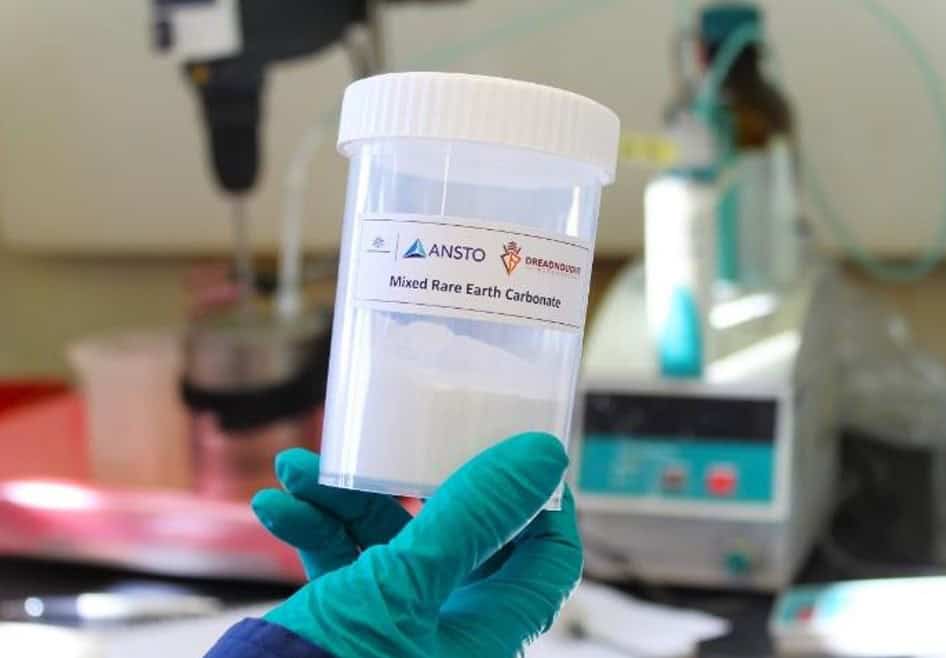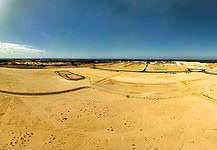High quality MREC produced from Yin monazite concentrate

High-quality mixed rare earth carbonate (MREC) has been produced from monazite concentrate at Dreadnought Resources’ (ASX: DRE) Yin project, part of the Mangaroon project in WA.
The concentrate was produced by metallurgical group ANSTO using a conventional low-temperature acid bake / leach process.
The testwork was carried out on a 2kg monazite concentrate sample that was taken from combined diamond core samples from three holes drilled at Yin.
The produced MREC was made up of 30.6% total rare earth oxides containing 8.3% neodymium oxide and 2.2% praseodymium oxide. It was predominantly comprised of monazite (50.6%), apatite (32.2%) and iron / manganese oxides (12%).
Testwork confirmed the monazite concentrate is responsive to processing via an acid bake / leach process with recommended conditions of 250-300°C with 1500 – 1700kg of acid for 2-4 hours.
The leach solution was processed through conventional downstream process steps, involving two stages of purification, U removal by ion-exchanges and precipitation of a MREC.
Metallurgical testwork demonstrated that high recoveries lead to a high quality MREC with further work expected to optimise the concentrate treatment process.
Dreadnought managing director Dean Tuck says this is a significant milestone for the company.
“This is a significant milestone for Dreadnought and the Yin rare earth element project,” he said.
“ANSTO is a world-leader in its field and has demonstrated that the monazite concentrate has excellent metallurgical recoveries using a conventional process that results in a high quality MREC.
“Ongoing metallurgical optimisation work is expected to further improve these results. With these results in hand, we are well placed to advance discussions with a range of downstream partners.”






































